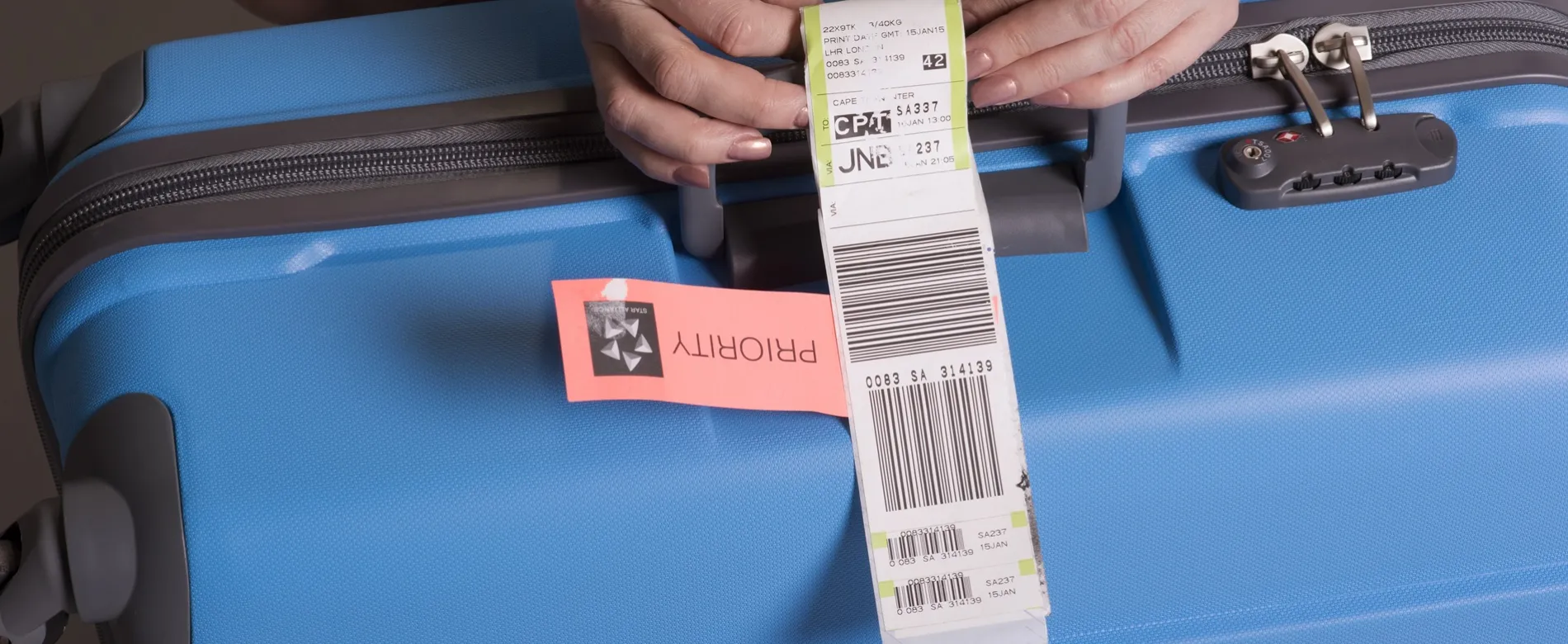The Very Important Baggage Receipt
If you are used to travelling by plane, then you probably have marks of stubborn adhesive on the back of your passport. These marks were left by baggage receipts that had stubbornly adhered to the back of passports, refusing to come off without causing damage.
Today, agents are more clued in about where to stick the claim portion of your baggage tag, often printing paper boarding passes just to have somewhere to stick it.
The Essential Baggage Claim Receipt
Imagine arriving at your destination only to find that your luggage has not arrived. The baggage claim receipt becomes your lifeline. It allows you to start a claim and provides proof of ownership, which is crucial when dealing with mishandled bags. Without this receipt, reclaiming your bag or proving it’s yours could become a complicated ordeal.
But what if we could improve this process? What if we could eliminate the physical baggage claim receipt altogether?
The Digital Transition
Years ago, provision was made in IATA Resolution 752 for an electronic baggage claim receipt. This resolution paved the way for a significant shift in how baggage claims could be handled.
Instead of a physical receipt, which can easily be lost or cause sticky damage , an electronic receipt could be sent directly to the passenger.
Overcoming Adoption Challenges
Despite the clear advantages, airlines have been slow to adopt this technology. The primary hurdle has been the lack of a direct communication channel with passengers. To issue an electronic claim receipt, airlines need a valid email address or phone number. This becomes challenging when tickets are purchased through travel agents, and the airline has no direct contact details.
However, there are solutions. Airlines could allow passengers to retrieve their baggage details from an airline website using their PNR or ticket reference. This method ensures that even without direct contact, passengers can still access their electronic claim receipt.
Embracing the Future
The benefits of electronic claim receipts are clear. They provide essential information for tracing mishandled bags and can be easily stored on a passenger’s phone, reducing the risk of loss. Resolution 752 outlines the minimum data required for these receipts, including passenger name, destination, flight number, baggage numbers, and PNR reference. Moreover, electronic receipts can be personalized with free text, making them more user-friendly.
Another Solution
There’s also the option of printing a simple paper receipt at self-service machines. However, this increases costs and provides another piece of paper that passengers can misplace.
The Path Forward
Transitioning to electronic baggage claim receipts is not without its challenges, but the potential benefits are worthwhile. It represents a significant step towards a more efficient and passenger-friendly baggage handling process. Of course, removing the claim receipt also reduces costs and waste, which are both admirable goals.

